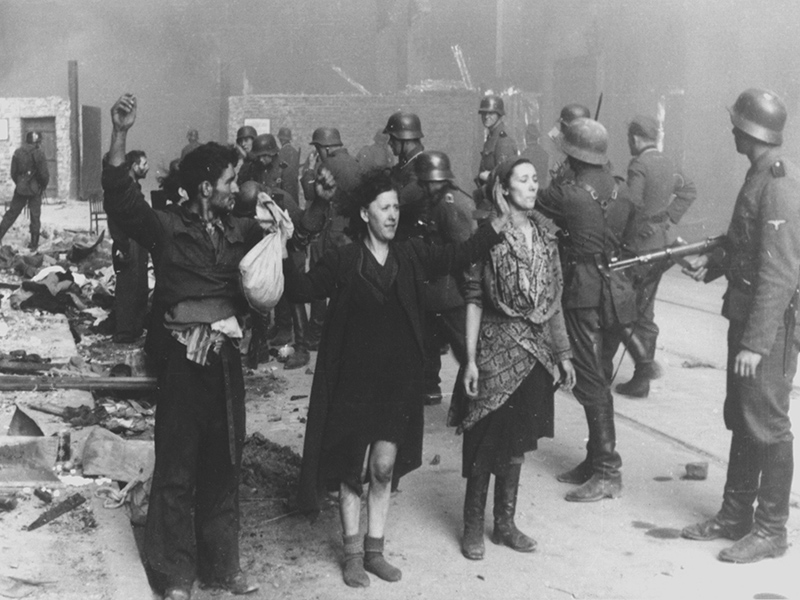The Council to Aid Jews, a committee formed by the Polish government-in-exile during World War II, actively sought, with some success, to rescue Jews pursued by Nazis in German-occupied Poland, a recent panel said.
Prof. Joshua Zimmerman, who teaches history at New York’s Yeshiva University, outlined the history and organizational structure of the council, code-named Zegota, at a talk held Nov. 7 at the University of Toronto’s George Ignatieff Theatre as part of Holocaust Education Week.
The program, “Helping the Jews in German-occupied Poland: Zegota and others,” featured Zimmerman and two other panellists: Prof. Dariusz Stola, a Polish writer and historian who teaches history at the Polish Academy of Sciences in Warsaw, and Prof. Samuel Kassow, an American historian who teaches at Trinity College in Hartford, Conn.
The three addressed issues including Polish attitudes to Jews during World War II and perceptions of and scholarly research on Polish efforts to rescue Jews during that period.
Moderated by Prof. Piotr Wrobel, a Polish-Canadian historian at U of T, the event was presented by the Embassy of the Republic of Poland in Canada, the Polish-Jewish Heritage Foundation of Canada and the Konstanty Reynert Chair of Polish History at U of T, with support from the Elizabeth and Tony Comper Holocaust Education Fund at the Anne Tanenbaum Centre for Jewish Studies and the Chancellor Rose and Ray Wolfe Chair of Holocaust Studies at U of T.
READ: PROPOSED NORTH YORK MUSEUM TO PAY TRIBUTE TO JEWS OF RADOM
“The Polish underground, on the initiative of the home army’s Jewish Affairs Bureau, established one of the largest Jewish aid networks in German-occupied Europe,” Zimmerman said.
He explained that after the Germans invaded Poland in 1939, the Polish government-in-exile, which was centred in London, England, from 1940 on, was a complex underground structure that encompassed various branches and departments.
Although some historical sources have said that Zegota was part of the Polish home army, Zegota was actually a subdivision of the government-in-exile’s civilian wing, Zimmerman said.
In 1943, at the height of deportations of Jews to the Warsaw Ghetto, Henryk Wolinski, who headed the home army’s Jewish Affairs bureau, reached out to the head of the department of social welfare in what was called the delegates bureau, a part of the government’s civilian wing.
His aim was to secure both institutional backing and funding to establish a provisional committee to aid the Jews.
The latter was, Zimmerman said, citing material from committee organizers, “meant to provide relief to Jewish people suffering from the results of bestial German persecution.”
The bureau asked the Polish government-in-exile for a budget of 500,000 zlotys per month (about $125,000 US today), and recommended that donations be solicited from Jewish organizations in England and the United States.
The provisional committee was reconstituted in December 1942 and renamed The Council to Aid Jews, retaining Zegota as its code name.
“A communiqué was sent to the delegates bureau informing them that Zegota was now a joint Polish-Jewish organization drawing from underground organizations like the Polish Socialist Party, the Democratic Party of the Front for Reborn Poland, but also the Bundt and the Jewish National Committee,” Zimmerman said.
In addition to working to rescue Jews from Nazi persecution by providing as many as possible with food, clothing and falsified documents and arranging hiding places for those they could, Zegota’s objective was to counter anti-Semitism within the Polish community, Zimmerman said.
READ: MUSEUM HONOURS POLES WHO SAVED JEWS DURING THE HOLOCAUST
Circulars that the group issued in 1943 emphasized to Polish readers that helping their fellow Jewish citizens was their civic duty, and warned that blackmailing or informing on Jews to the Nazis would be considered a capital offence, for which “a future court in reborn Poland” would eventually pursue justice.
Although Zegota did not receive the full funding it was allocated by the delegates bureau, by 1944 it had succeeded in using what funds it did have to support between 3,000 and 4,000 Jews in hiding.
Over the course of the war, the group also provided thousands of Jews with false papers.
By 1944, Zimmerman said, the children’s section of Zegota had succeeded in removing an estimated 2,500 children from the Warsaw Ghetto.
